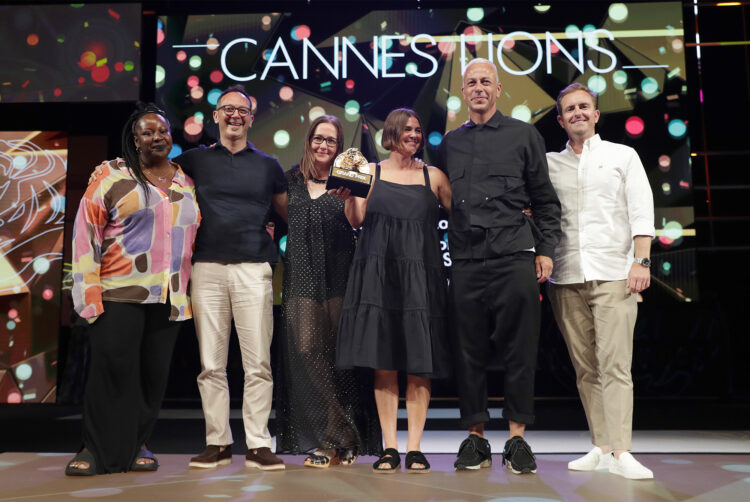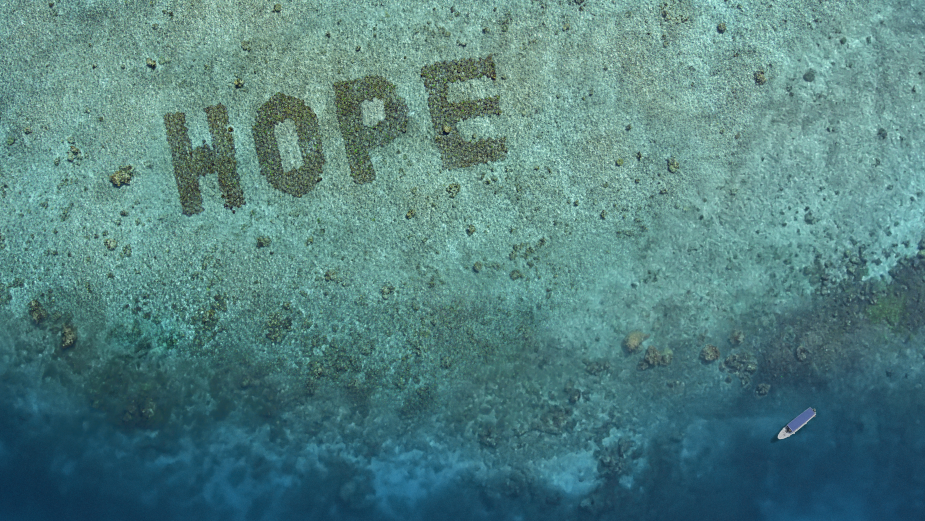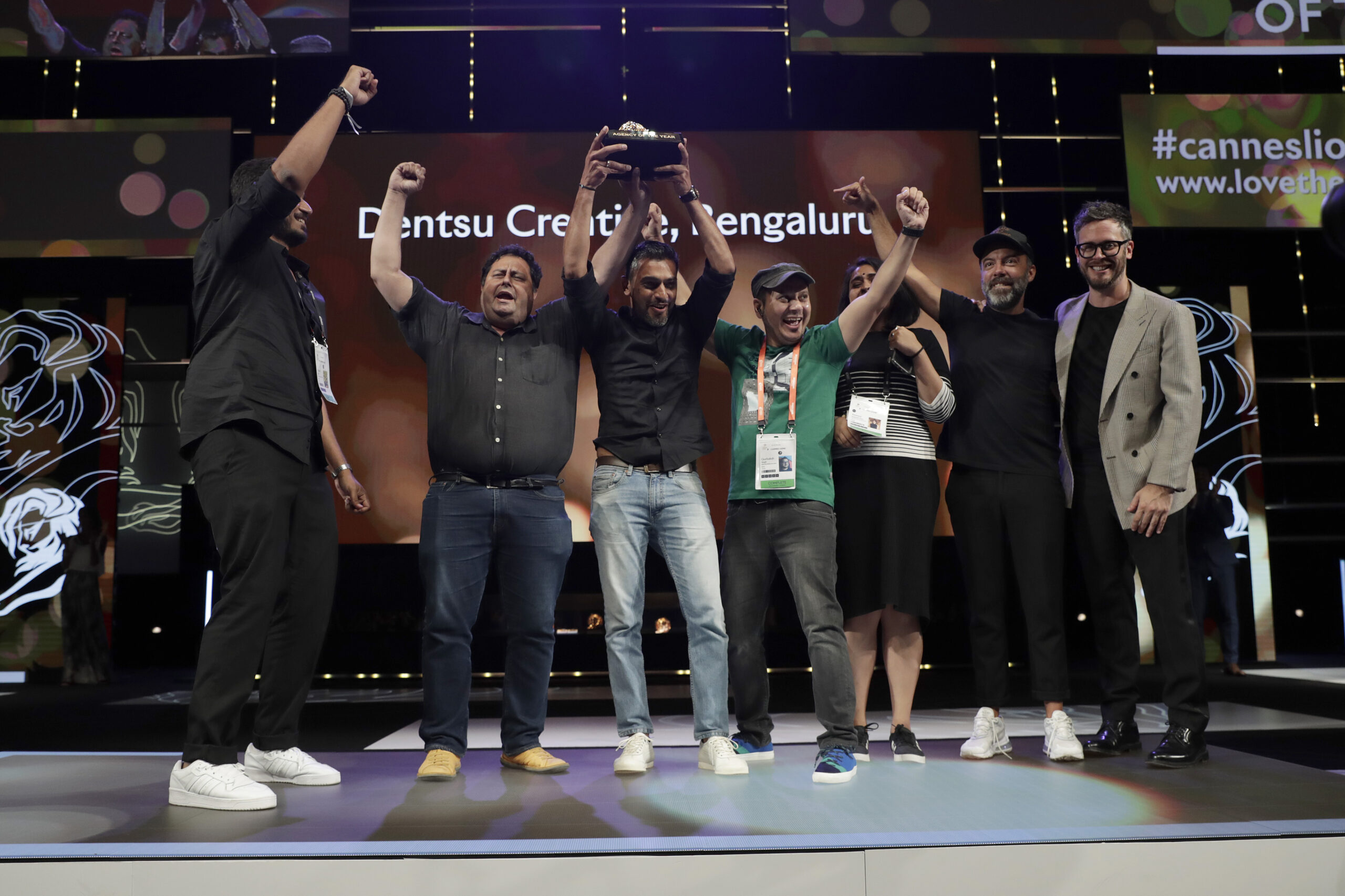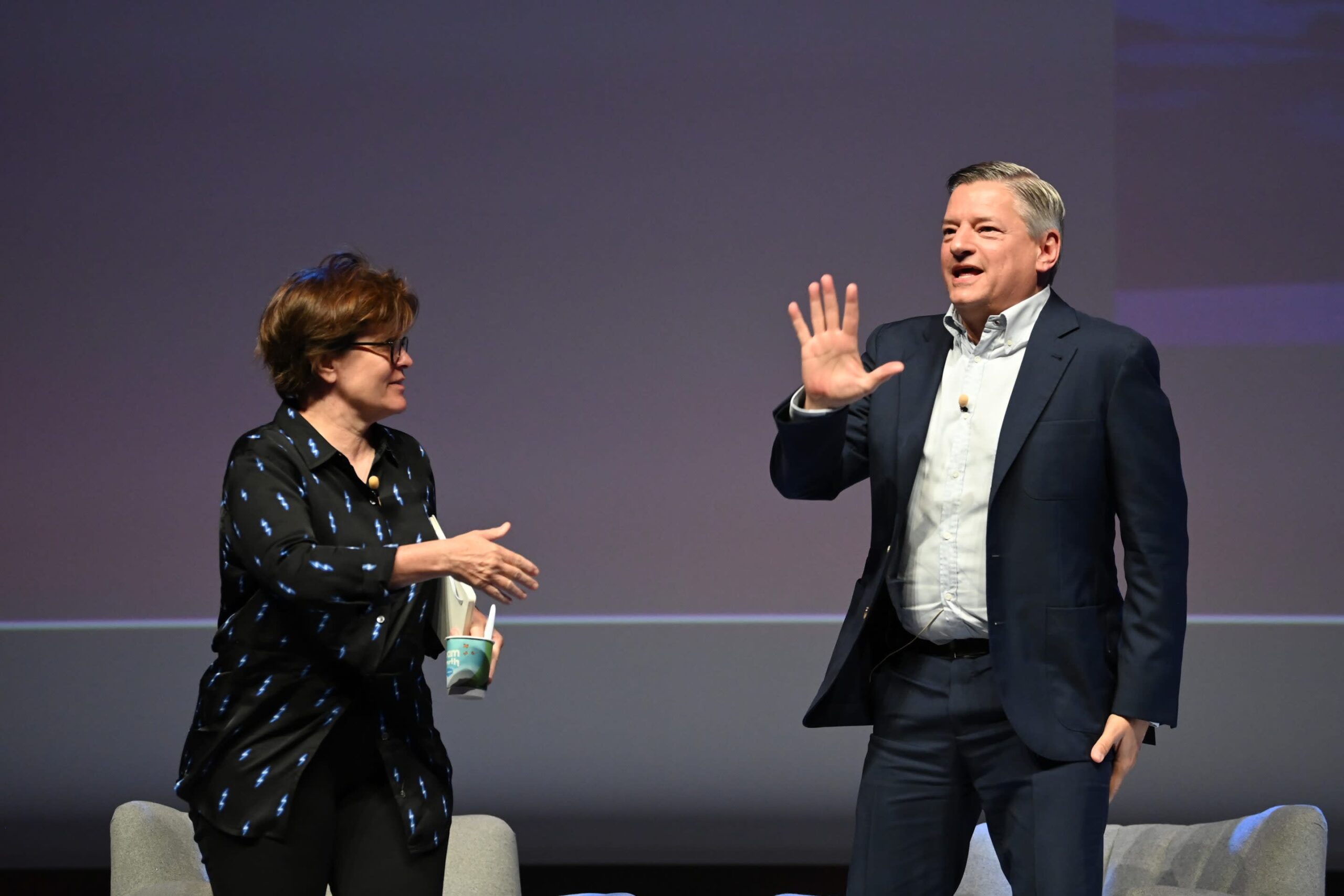Why Sheba won Media Lions: media highlights from Cannes

Review
For all the talk of the metaverse, NFTs and the rise of the creators, this year’s Media Lions Grand Prix winner represented a big media idea and execution that was as tangible as it gets.
Sheba’s ‘Hope Reef’ is a striking piece of out-of-home work and part of a 10-year initiative so large that it can be seen from space.
Omnicom’s AMV BBDO London was awarded the Media Lions Grand Prix for the Mars Petcare brand. The campaign promotes the building of Hope Reef and forms part of the world’s largest coral reef restoration programme, starting off the coast of Sulawesi in Indonesia.
The reef, which can be seen on Google Earth, has been built to spell the word H-O-P-E and consists of 840 Reef Stars. It has been designed to be a living, growing symbol of our ability to bring coral reefs back to life. Every part of the campaign puts reef restoration on the map.
More than 12,500 coral fragments have been attached to kickstart regrowth, and the programme will restore more than 185,000 square metres of coral reefs by 2029, the equivalent of 148 Olympic swimming pools.
Why is a cat food brand doing this?
Speaking to The Media Leader ahead of the Media Lions shortlist being announced, Daryl Lee, global CEO of IPG Mediabrands and Media Lions jury president, talked about the power of having a “connected purpose” — meaning something that is genuinely credible to the brand, not just an add on.
Sheba’s “Hope Reef” is built upon a decade of Mars research, which explores ways to help sustain and restore coral reefs. Threatened with extinction due to overfishing, pollution, unsustainable tourism practices and rising ocean temperatures, coral reefs are considered to be essential for a quarter of all marine life.

For a food brand that relies on fish to feed cats this represents a clear connected purpose, because more coral today means more fish tomorrow. The fact it is a media idea that can also improve an imbalance in the marine ecosystem, and potentially the lives of 500 million people around the world who rely on reefs for food, income, and coastal protection, makes it a compelling proposition.
The Mars brand partnered with Google to make Hope Reef a historical landmark on Google Earth, and dive-able on Google Maps and StreetView. In addition, a dedicated YouTube ‘Channel That Grows Coral’ is raising funds for new reefs through views and ads.
Announcing the Grand Prix winner, Lee recognised the powerful campaign as an “immersive experience that built both global scale and a deeply personal connection”.
He added: “And it’s helping to save our planet in an authentic and credible way for the brand. The jury was united in celebrating this perfect marriage of idea and technology, of message and medium, of purpose and place.”
The Media Network of the Year 2022 winners, in order of ranking, were OMD Worldwide (Omnicom), MediaCom (WPP) and Starcom (Publicis Groupe).
Other notable winners
More than 700 Lions were awarded last week; all brilliant and inspiring in their field. Here are five that I think deserve more attention for those in the business of media:
Vice helps India take global stage
For the first time in the history of the festival, an Indian agency, Dentsu Creative Bangalore, won the mantle of Agency of the Year on the back of the success of its “Unfiltered History” campaign with Vice Media. The work features a subversive tour of the British Museum, as told through the eyes of the communities where the displayed artifacts have been taken from using immersive Instagram filters.
Dentsu hacked Instagram’s AR filters to help them teleport the artefacts back to their homeland. Typically, Instagram filters are not meant to scan life-size 3D objects, which in some cases were up to 10 feet tall, so they hacked Instagram’s face filter technology and repurposed it to an entirely new use case, in a true media first.
It enables users of the app to scan ten objects in the museum, including the Rosetta Stone, Parthenon Marbles and Benin Bronzes to unlock an augmented reality which steps back in time to show the moment these items were removed.

A series of podcast episodes featuring experts from these countries brings the immersive experience to life. The podcast series, accessible through the mobile site TheUnfilteredHistoryTour.com and all major podcast platforms, builds on the success of the Vice World News video series Empires of Dirt, which uncovered stories of colonialism often not taught in schools.
Unfiltered History went on to win a Titanium Lion and three Grand Prix Lions in Social & Influencer; Radio and Audio; and Brand Experience & Activation. The contentious, hard-hitting work — which claims many exhibits in the British Museum only serve to highlight “what my grandfather stole from your grandfather,” plays to Vice Media’s counterculture sweet spot.
It’s a timely reminder of the power and reach of Vice Media as rumours persist about a possible sale following pressure from investors, and an ongoing audit of its Studio business by bankers LionTree and PJT Partners.
Embattled Channel 4 wins for ‘Super. Human’
The Film Lions are the festival’s original award, launched in 1954, and remain hotly contested with more than 2,000 entries. In an unusual move, the jury awarded two Film Lions Grands Prix this year. One was presented to ‘Escape from the Office’ for Apple by Apple, Sunnyvale / Smuggler, Central LA. The other went to UK broadcaster Channel 4’s ‘Super. Human’ campaign by in-house team 4Creative, London.
The third iteration of C4’s original ‘Meet the Superhumans’ campaign from London’s 2012 Summer Paralympics, over the last decade the work has not only changed perceptions around the Paralympics games, but has had a long lasting impact on both perceptions of disabilities and representation of disabled people in media.
Made by Oscar-nominated cinematographer Bradford Young, Super.Human. explores the sacrifices made by Paralympians to pursue their dreams of being crowned Paralympic champions. Unlike previous iterations of the Superhumans campaigns, this film focused on the fragilities and day-to-day struggles facing elite athletes — putting the emphasis on ‘human’ over ‘super’.
Super. Human was conceived by Channel 4’s innovative agency 4Creative, and the international recognition comes amid the UK Government’s controversial plans to sell the 40-year-old broadcaster.
After winning the Grand Prix, Channel 4’s chief marketing officer, Zaid Al-Qassab (pictured among the winning team, above), wrote in an emotional Linkedin post: “Last night I had the most surprising and joyous evening of my career when Channel 4 won the Film Grand Prix at the Cannes Lions International Festival of Creativity… I’m lucky to have had some extraordinary bosses, not least Channel 4 CEO Alex Mahon, who believes in people and creativity, and championed our risk-taking… None of this would have been possible without the amazing team at 4Creative, led by the brilliant Lynsey Atkin… Last but not least, our partners the International Paralympic Committee & ParalympicsGB, and the real heroes of the work, the extraordinary Paralympians themselves. I salute you all.”
Mexico wins its third ever Grand Prix
Elsewhere, the Grand Prix Glass Lion, which celebrates culture-shifting creativity and addresses gender inequality or prejudice, went to Data Tienda, for We Capital, by DDB México, Mexico City. Data Tiendasolves a real-world problem affecting 35 million women in Mexico who do not have any official credit history. Without any bank accounts or credit cards, women in Mexico struggle to have any financial freedom.
Data Tienda, which also won Grand Prix in the Creative Data Lions category, recognised that nearly all women in Mexico actually have long credit histories in paper records with thousands of shopkeepers. We Capital created a system that enabled women to name five trusted shopkeepers, from which qualitative and quantitative data could be collected via WhatsApp bots to create immediate credit scores for the women.
Within three months, more than 10,000 women received credit histories with help from more than 5,000 shopkeepers. And 23% of those women received microcredit loans from banks. Helping them take set up businesses or take out loans for the first time.
The Glass Lions were the brainchild of Meta’s outgoing COO, Sheryl Sandberg, and represent only the third ever Grand Prix won by Mexico, but its second in two years, suggesting the advertising world is starting to wake-up to creativity in the country.
First Creative B2B Lion
In the first ever Creative B2B Lions, which looked for creativity and effectiveness in advertising products and services bought by professionals on behalf of businesses, 415 entries were received and 14 Lions awarded by the jury: 3 Gold, 4 Silver and 6 Bronze.
The Grand Prix went to Speaking in Color, for Sherwin-Williams, by WPP’s Wunderman Thompson Minneapolis. The campaign promotes the paint manufacturer’s first-ever AI voice-activated colour system designed to help architects choose the right colour. A natural-language-powered app invites uses to talk about experiences and inspirations so it can learn and build a search algorithm able to suggest millions of images and bespoke colour palettes. All voice-controlled, the colour matches can be easily reference, refined and enhanced.
Creative B2B Lions Jury President, Paul Hirsch, president and chief creative officer at Doremus Global, called it “an exciting first year”.
Hirsch added: “In the end what made the difference was the winning works’ strategy, deep understanding of its audience, and exceptional and personal brand experience. In the past, B2B has often surfed in the wake of B2C, but I have a feeling this work will flip the script and have deep B2C implications in the near future.”
And finally, Cannes Lions’ most eager new entrant went to…
The last winner to note is The Entertainment Person of the Year, given in recognition of the vital role entertainment plays in the marcoms landscape, which this year was presented to Ted Sarandos, the co-CEO of Netflix (pictured, below, with New York Times tech journalist Kara Swisher).

Netflix’s presence at Cannes Lions — the first time officially at the global advertising conference — was a clear sign of intent for the streaming giant.
In an interview on stage on Thursday, Sarandos confirmed the subscription-based company is soon to include an advertising option within its business model. The U-Turn follows disappointing numbers in the first three months of 2022, as Netflix announced net losses of 200,000 subscribers, resulting in shares falling 35%, wiping more than $50bn off the firm’s market value.
“We’re adding an ad tier; we don’t add ads to Netflix as you know it today. We’re adding an ad layer for people to say, ‘Hey, I want a lower price and I’ll watch ads,’” Sarandos confirmed.
Proving, yet again, that nothing drives creativity and innovation like necessity.

Arif Durrani is an international media consultant and freelance writer. He was previously Bloomberg Media’s executive editor for EMEA. @DurraniMix



